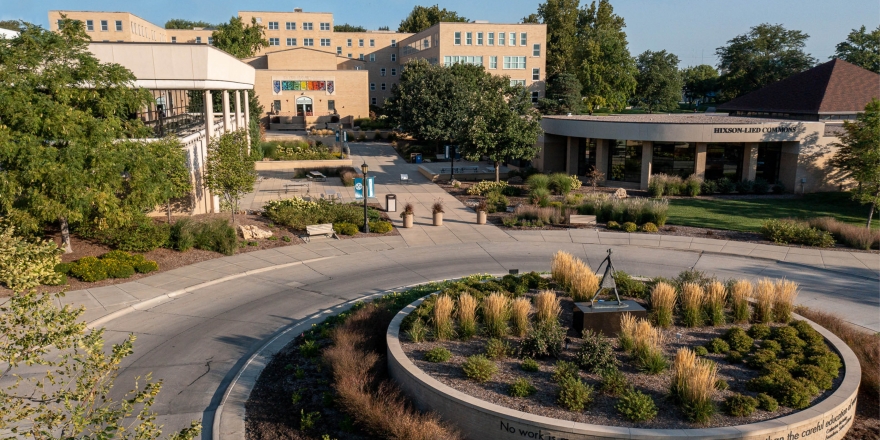
U.S. News & World Report: A Guide to Women's Colleges
Women's colleges provide a safer and more intimate college experience, experts say.
By Sarah Wood, U.S. News & World Report
Key Takeaways:
- Women are put at the forefront of the curriculum at these colleges.
- Women's colleges often are smaller, allowing for more personalized classroom experiences.
- Campuses of women's colleges tend to be safer, experts say
Women's colleges and universities were originally created as a response to the exclusion of women from higher education.
In the 1960s, about 230 women’s colleges existed, a number that has decreased to about 30 today, according to the Women's College Coalition, an association of women’s colleges and universities.
Some skeptics have questioned the value of women's colleges in a modern society and their ability to keep up with social changes.
However, "that vital importance of women's education and women's empowerment when the women's colleges were founded 250 years ago still resonates today," says Martha Malinski, executive director of the Women's College Coalition. "Women's colleges still excel in placing women in positions of power and influence across our country, and opening doors for generations of women after them."
Here's what prospective college students and their families should know about women's colleges.
How Women's Colleges Compare to Coed Institutions
Compared to coed schools, women's colleges put female individuals at the forefront of their curriculum.
"Women’s colleges help students gain historical and cultural knowledge about themselves and contributions women have made," Mary Pope Maybank Hutson, president of Sweet Briar College in Virginia, wrote in an email. "By learning about the evolution of women’s roles in the U.S. and around the world, students learn about themselves. They learn to aim high and not to 'settle.' They develop ambitions for their own contributions and they become empowered."
Additionally, women's colleges tend to have a higher percentage of female faculty members compared to coed institutions, providing opportunities for students to see more female leaders firsthand.
"It's easier to envision yourself in a place if you can see someone who looks like you in that place already," says Amanda Roe, assistant dean for sciences and professional studies at College of Saint Mary in Nebraska.
Benefits of Attending a Women's College
Women's colleges are often smaller in student population, which allows for more personalized attention. Of the 10 women's colleges ranked in U.S. News' 2025 Best Colleges, the average enrollment in 2023 was about 1,913 students.
"These strong pupil/mentor relationships with faculty pay off in meaningful letters of recommendation (not generic) for graduate and professional schools, as well as internships and jobs," Hutson says. "Students have more opportunities for one-on-one experiential learning, like conducting research with a faculty member."
Campuses of women's colleges also tend to be safer, Roe says. "Assaults primarily happen against women, and when you have an all women's campus those sorts of things go down significantly."
However, she adds, that it's not just about physical safety. "When you feel safer in a space, you are more open to experiences and learning and growing."
Attending a women's college also allows students to learn in a diverse environment, says Leocadia I. Zak, president of Agnes Scott College in Georgia.
"People aren't necessarily aware of the diversity that exists today at women's colleges," she says. "That's another very important part of the experience. That learning in a diverse environment ... gives them a broader world view, broader cultural view and prepares them better for the world when they leave afterwards."
Is Enrolling in a Women's College Right for You?
The college choice comes down to personal preference, Roe says, "and what you are looking to get out the college experience." For instance, think about whether you prefer a small, medium or large campus and whether you would like a rural, suburban or urban location.
Another factor to consider is a college's academic programs.
"Smaller women’s colleges are unable to offer the greater number of majors, programs or sports teams available at much larger schools," Hutson says. "However, we firmly believe women’s colleges offer unparalleled advantages to women students, especially in the STEM fields."
Many women's colleges have long focused on STEM programming. According to a 2020 study analysis from the Center for the Advancement of Women at Mount Saint Mary’s University in California and the Women’s College Coalition, the percentage of bachelor's degrees in STEM fields earned by women of color was higher at women's colleges, 34.2%, than at coed institutions, 19.8%.
There's also been an increased investment in STEM at women's colleges in recent years.
For instance, in 2023, NASA announced plans to award more than $5 million in funding to seven women's colleges to address gender gaps in STEM. College of Saint Mary is using their grant – more than $615,000 – to give scholarships to STEM-interested community college transfer students to help cover their education, as well as to fund academic support and research opportunities.
Students who want a coed college experience shouldn't necessarily rule out a women's college, Malinski says. "You can attend a women's college and still get that coed experience if that's something that students or families are looking for."
For instance, students at Spelman College, a women's historically Black college in Georgia, can cross-register at any member institutions of the Atlanta Regional Council for Higher Education, which includes the neighboring all men's Morehouse College and coed Clark Atlanta University.
Zak also encourages potential students to visit campuses.
"To visit a women's college, to talk to students who are at women's colleges, it's the best way to learn," she says. "Even if you think you might not go there, you could be surprised."











